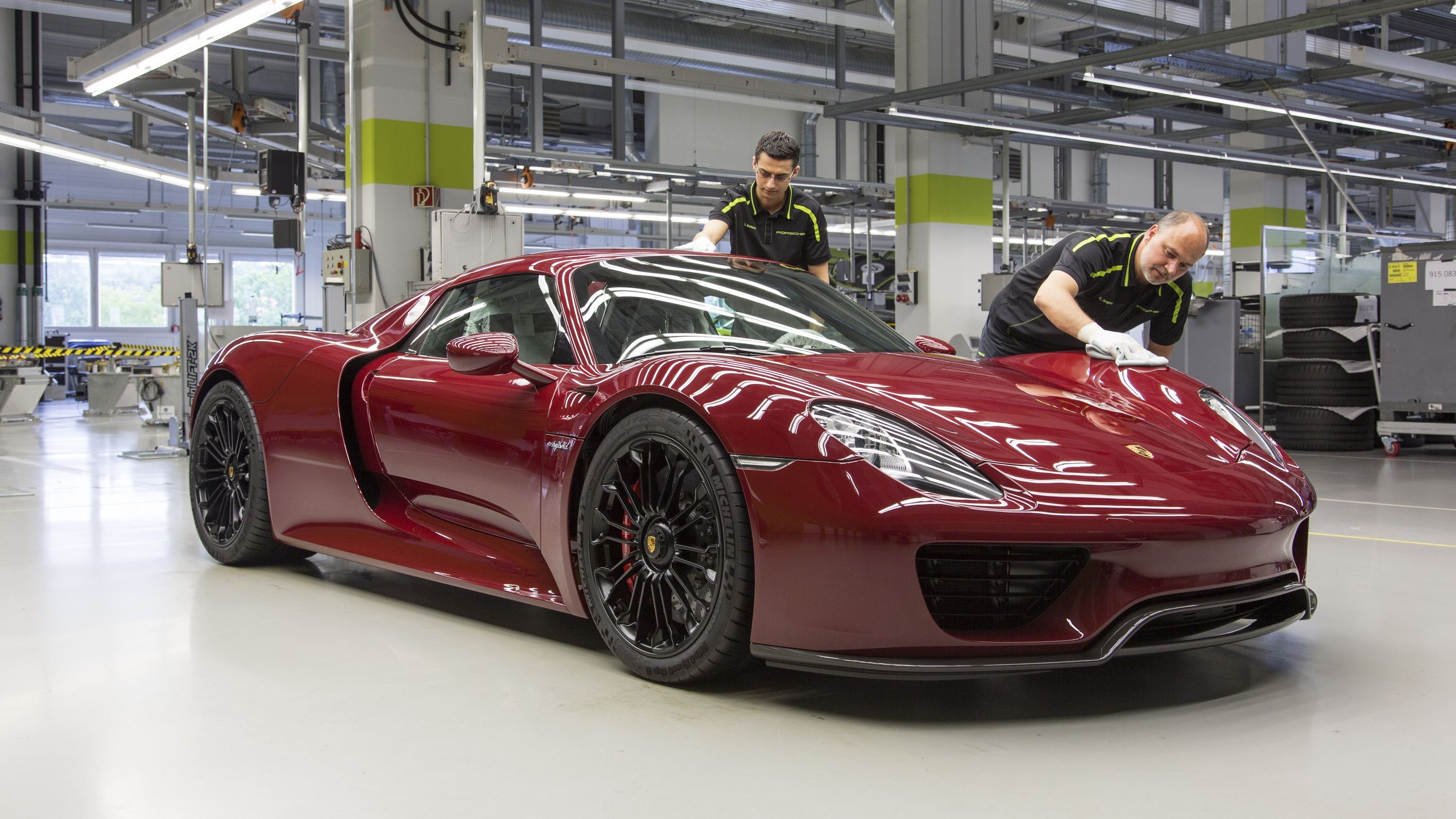Porsche’s->ke1 brilliantly anachronistic science experiment has run its course. The 918th and final 918 Spyder->ke3629 rolled off the assembly line this week at Porsche’s Stuttgart-Zuffenhausen factory, and, in true German fashion, it did so on-schedule, despite Chris Harris predicting otherwise. The final 918 (above) wears a custom dark-red paint job and will probably be worth a significant amount of money some day. (Like it's not already. What am I saying?)
It doesn’t seem all that long ago that Porsche stunned the world with its new hybrid->ke147 supercar->ke177 at the 2010 Geneva Motor Show.->ke228 The 2014 Porsche 918 Spyder was a seriously radical car — a high-performance hybrid that used electric motors to improve both efficiency and performance, coupled with a high-revving V-8 from the RS Spyder LMP2 race car.->ke148
The announcement and subsequent production green light a few months later sent the industry scrambling, and both Ferrari->ke252 and McLaren->ke284 announced new high-performance hybrids of their own, sparking (pun intended) an entirely new genre: the hybrid hypercar.
The production 918 exceeded even Porsche’s expectations. With 887 horsepower, the sprint to 62 mph was verified at 2.5 seconds, and it would eventually blitz the Nürburgring Nordschleife->ke999 in just 6 minutes 57 seconds — all with the capability to run for 18 miles in electric-only mode without emitting a single carbon molecule.
Continue reading for the full story.
Why it matters
Even though 918 production has ended, we’re just beginning to understand the effects it will have on the automotive landscape. It made hybrids cool, unlike the dreary gas-electric commuting appliances we had become use to, and now hybrids have begun to proliferate throughout the Porsche range, with the 2015 Porsche Cayenne Hybrid, 2014 Panamera Hybrid and a likely inevitable 911 Hybrid.
Just two years after it went on sale, we’re also beginning to see other companies bring performance-hybrid technology to cars we might someday actually be able to afford. The next 2016 Acura NSX, for instance, uses similar technology and is expected to cost around $135,000 when it goes on sale in 2016, which is about $700,000 less than the 918.
Porsche has a way of breaking new ground and outdoing itself with every subsequent halo model. The 911 Turbo->ke571 brought turbocharging to wider audience; the 959->ke926 introduced all-wheel-drive to the sports car->ke506 world; the Carrera GT->ke2124 brought with it a race-bred V-10 engine and full carbon-fiber monocoque chassis, while the 918 Spyder made batteries and electric motors fun. The question now is, what’s next?
2014 Porsche 918 Spyder
Read our full review here.

